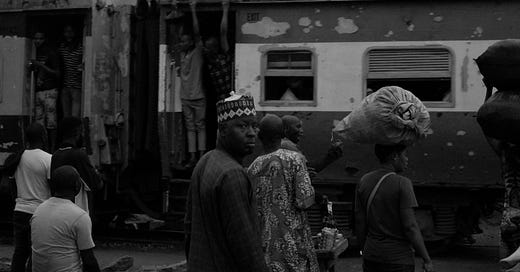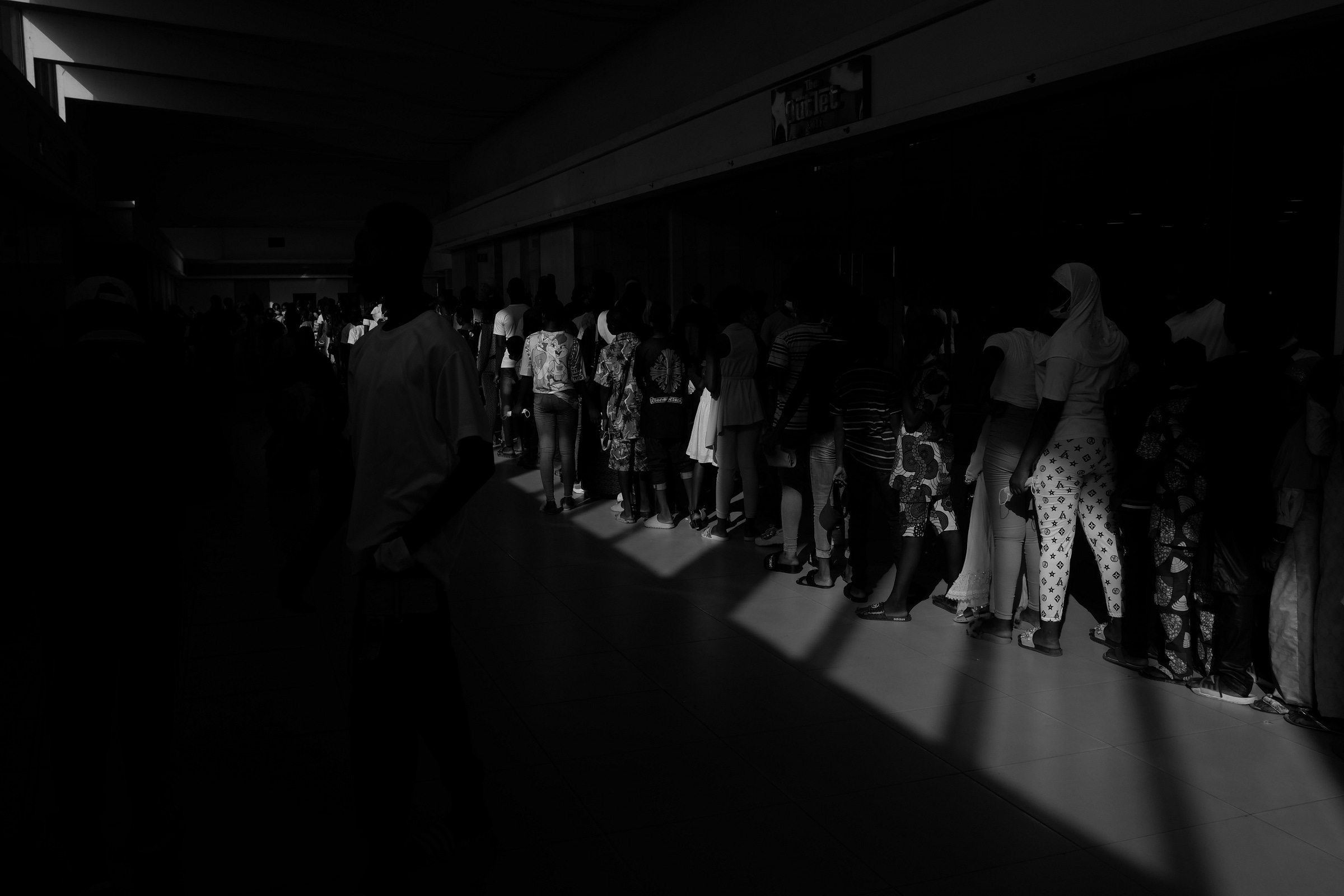The scene is a patchwork of sorts; here is the rough surface of the train, here are the bodies in an unposed array. It is also a scene with a range of expectations: he who sits does not seem as task-driven as she who bears a load, nor is she as settled as those who hold themselves by the frame of the door. A train station is sure to be a place of inevitable, fleeting encounters. Yet, note the man with a cap, his glance as unsparing in its distrust as its attention.
Abifola Olorunlana: “Even if nothing unusual is happening around, you have to fish with your own eyes.”
The photograph was taken at Tejuosho, Yaba, Lagos.
I was spontaneous in taking the photograph. Street photography requires you to be always ready for the next moment because you might never get to witness certain events again. Even if nothing unusual is happening around, you have to fish with your own eyes. That was how this photograph came about.
I was heading towards Yaba Bus-stop from Oju Elegba on foot when I realized a sudden change in the atmosphere of the crowd ahead. People were standing a few meters away from the railway on both sides of the track while traders were speedily moving their goods off the railway line. I still couldn't figure out what was going on until I was almost in front of the crowd. Then I felt the vibration of an oncoming train from a distance. I quickly grabbed my camera from my bag, and took a shot of the scene. By then the train was already moving past and I almost missed the shot.
I have always wanted to capture moments like this for a very long time: the commotion and energy of the atmosphere whenever a train is passing by. When the opportunity came, I made sure I didn't miss it.
My approach towards street photography is quite simple; most of my shots and angles are not predetermined. I look out for: the interaction between individuals, between people and objects around them, the juxtaposition of objects on the streets to people or buildings.
I tend to signal passersby for a portrait shot by waving my camera at them; I get a yes and sometimes get turned down, which is often due to the fact that most people get intimidated at the sight of a camera on the street.
Photography itself has been most impactful in the preservation of memories and history; which has helped individuals connect with their past, roots, or have, to some extent, an understanding of the ways of a particular group of people in a particular period of time. Photography has also given certain people the courage to express and tell their stories.
Two other photographs by Abifola Olorunlana
Last Week — Adetutu Adeniran
The photograph documented who I had become. I gained admission at a young age and after spending seven years in school, I changed. It made me aware of the person I had become. The photo was a culmination of the experiences and transitions up to that morning.
Read more: You Are Beautiful
Support Abifola Olorunlana
Thank you for reading and sharing this feature. Find out more about Abifola’s work on Instagram, as well as via the Kuta Arts Foundation in Abeokuta, Nigeria, an organization he belongs to.
Support Tender Photo
This is the 30th edition of the newsletter. Every week I feature one photograph and the photographer who took it. You’ll read a short caption from me, and a statement from the photographer. My goal is to set up conversations with the work of early to mid-career African photographers. If you know of any photographer whose work is deserving of attention, please email me with their name(s).









Beautifully articulated description of the train photo.
Not only have you allowed the image itself to tell its own story, you’ve enriched the canvas with your own thoughts process behind capturing it. Love it!